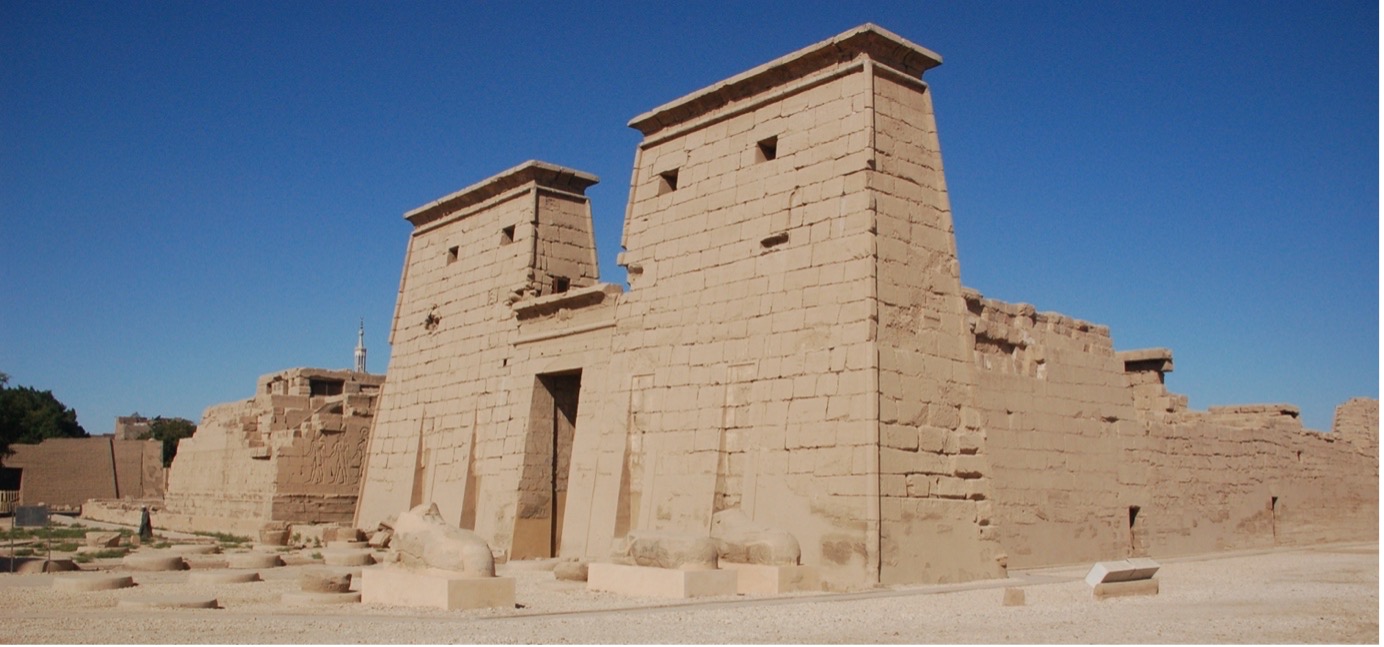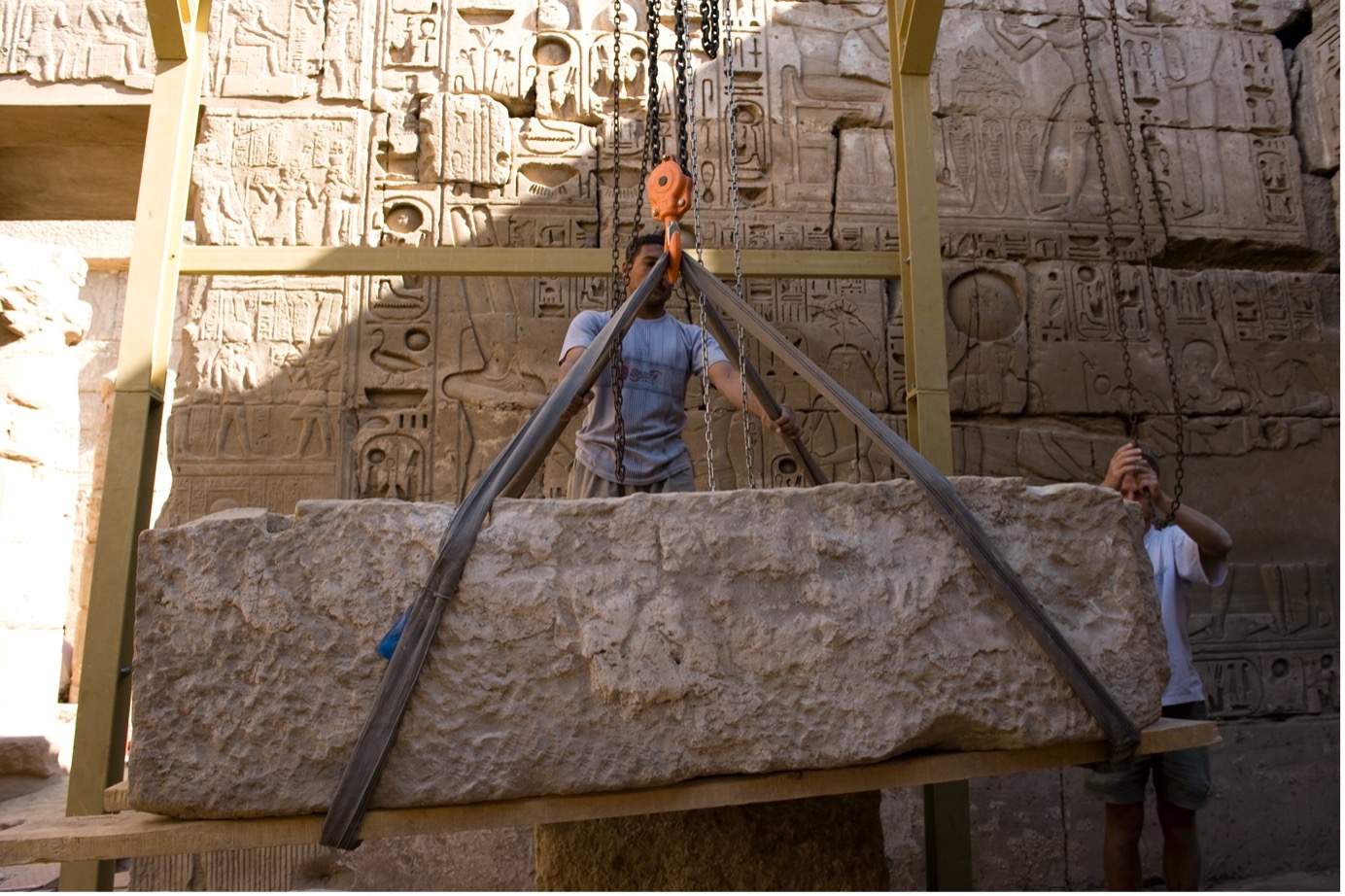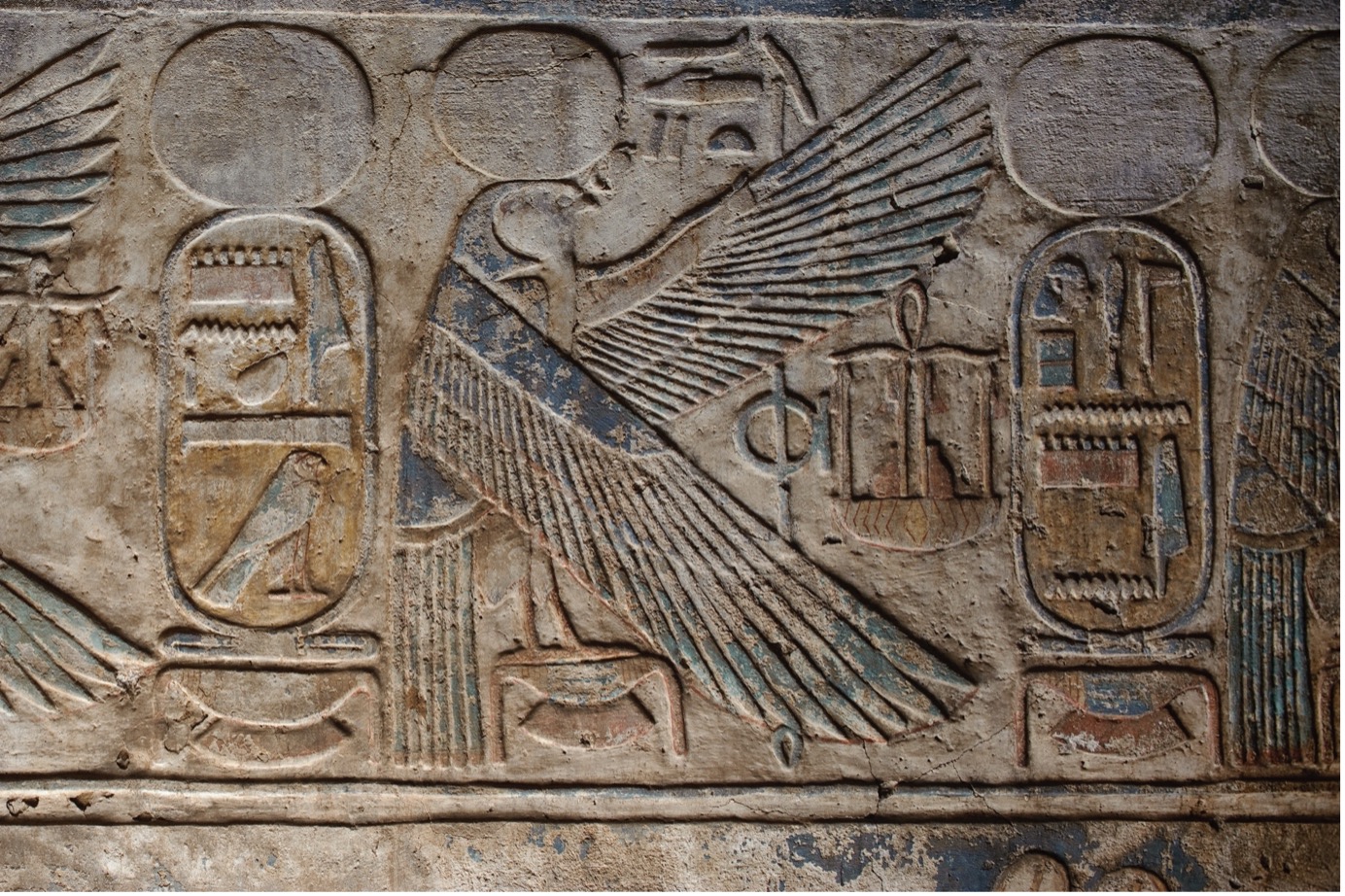- EraPharaonic
- Project DirectorJohn Shearman
- LocationLuxor
- Project SponsorUSAID
- Project Dates2006-2018
- Project ImplementerARCE
Khonsu temple is situated in the south-west corner of the precinct of Amun-Ra at Karnak. It was built during the reign of Ramses III (1186-1155 BC) and dedicated to Khonsu, son of Mut and Amun. The temple faces Luxor temple to which it is connected by an avenue of sphinxes that have recently been revealed in their entirety. Although the temple is relatively modest in scale (approximately 70 by 30 meters or 230 by 99 feet), it is remarkably complete. It comprises a pylon, a court, a hypostyle hall, a barque shrine and ambulatory, and a number of chapels including one at roof level. Almost all surfaces are decorated with both bas-relief and intaglio carving much of which (especially in the chapels) has survived with intact polychromy.
Khonsu Temple seen from the southeast. Photo: Nicholas Warner.
The temple occupies the site of at least one earlier temple and the bulk of construction is in sandstone except for the granite clad interior of the barque shrine. All of the sandstone blocks are repurposed. Some are from an earlier temple on the site that was dismantled by Ramses III to build the present temple and some are from other temples on the West Bank of Luxor. What is quite extraordinary is that epigraphic research by Chicago House suggests that the use of the blocks respects their origin; in other words, the blocks found in the Khonsu Hypostyle hall come from the Hypostyle hall of an earlier quarried temple.
Restoration of the Barque Shrine. Photo: Owen Murray.
Auguste Mariette, the founding director of the Egyptian Antiquities Service, first ‘freed’ the Temple of Khonsu of debris in 1858, after which its future preservation as a building, rather than a ruin, became a tangible problem. In the early 20th century, extensive losses at the base of the structure due to water damage, particularly on the pylons and around the door jambs, were consolidated with red brick in cement mortar. Structural steel bracing was introduced in areas of the roof, and joints and losses in the stonework were patched with cement mortar in the interior and on most of the perimeter.
Detail of polychrome relief decoration in Chapel 12 after conservation. Photo: Owen Murray.
In the 21st century, ARCE initiated a new program of conservation at the site, which commenced in 2008 and ended in 2018, with brief periods of hiatus during that 10-year period. ARCE’s projects at the site, funded in their entirety by the U.S. Agency for International Development (USAID), took place within the framework of a variety of training programs or “conservation field schools” for local conservators. These field schools not only allowed conservators from the Ministry of Tourism and Antiquities to gain crucial hands-on experience and build on their existing skills but also supported the widescale conservation component of the projects. Work primarily focused on the consolidation and treatment of surviving polychrome reliefs in six of the temple’s 12 chapels.
Additional project activities included limited restoration work on the exterior wall of the temple, structural improvements and consolidation for select areas of flooring that were in advanced states of decay, and a photography field school for two Ministry inspectors under the guidance of ARCE’s project photographer, Ayman Damarany.
In September 2019, ARCE, in coordination with the Ministry of Tourism and Antiquities and USAID organized a media event in Luxor to promote the investments and improvements made in Khonsu Temple and its sister project in Dra Abu El Naga.
ARCE plans to prioritize the completion of the conservation of this major Pharaonic monument starting in the fall of 2021 with full documentation using 3D laser scanning. The work is scheduled to continue for at least four years and will initially focus on structural repairs and consolidation followed by the conservation of the remaining un-treated polychrome painted surfaces and further training for local conservators and site managers. The project has already received outline permission to proceed from ARCE’s longtime institutional partner, the Ministry of Tourism and Antiquities, and we look forward to the day when this remarkable and enduring example of Egypt’s unique cultural heritage can be visited in a fully conserved condition.
Field school participants at Luxor’s Khonsu Temple. Photo: Owen Murray.
Field school participants cleaning the east wall at chapel 6. Photo: Owen Murray.



